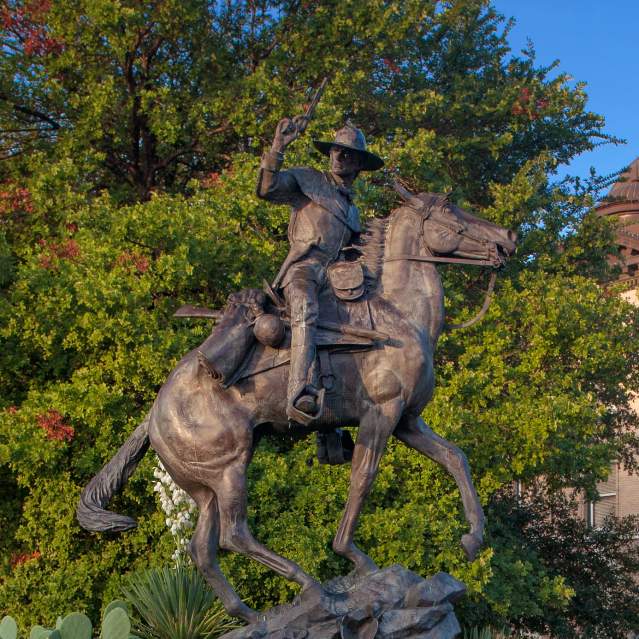History
Once upon a time…
SAN MARCOS, TEXAS. San Marcos, the county seat of Hays County, is on Interstate Highway 35 twenty-five miles south of Austin in the southeastern part of the county.
The San Marcos River has been a watering place for Native Americans throughout the ages. Mastodon bones and Clovis points, uncovered in an underwater archeological dig conducted by Dr. Joel Shiner of Southern Methodist University, produced evidence that the Clovis Man lived in and around the headwaters of the San Marcos River over 12,000 years ago.
It was the site of several Spanish attempts at colonization before it became the center of Anglo-American settlement in the area. The first such attempt, in 1755, saw the short-lived establishment of the San Xavier missions and the presidio of San Francisco Xavier. These were relocated less than a year later, and the headwaters of the San Marcos River remained unsettled for another half century.
In 1808, the Spanish governor of Texas, Manuel Antonio Cordero y Bustamante, sponsored the civil settlement of San Marcos de Neve near the same site, but floods and Indian raids prompted its abandonment in 1812.
In November of 1846, Thomas G. McGehee became the first Anglo-American to settle in the vicinity of the San Marcos Springs, but William W. Moon has been identified as the original resident of the site that became San Marcos proper. Moon was soon joined by other former members of John C. Hays' company of Texas Rangers and by Gen. Edward Burleson. Caton Erhard opened the first store and post office by 1847, and the First Methodist Church began soon after.
The Texas Legislature organized Hays County on March 1, 1848, and designated the young community as the county seat. San Marcos already had 387 residents. In 1851 General Burleson, William Lindsey, and Dr. Eli T. Merriman took possession of a 640-acre section of the Juan Veramendi grant and laid out the town center. Tarbox and Brown stagecoaches linked San Marcos with Austin and San Antonio in 1848, and the town began its development as the commercial center for the cart trade between area farmers and ranchers and coastal commission merchants. It also became a center for ginning and milling local agricultural products.
Slowed for a while by the Civil War, the population in 1870 had grown only to 742, but in the decade following the arrival of the International-Great Northern Railroad in 1881 it reached 2,335. In that decade the town supported two banks, an opera house, and a variety of stores, saloons, and other businesses.
Cattle and cotton production in the area provided the basis for the gradual but steady growth of San Marcos as a center for commerce and transportation.
The chartering in 1899 and subsequent opening in 1903 of Southwest Texas State Normal School and of the San Marcos Baptist Academy in 1907 established education as an important local industry.
In the 1960s, with the emergence of Aquarena Springs and Wonder Cave as important attractions, the tourist industry became a reliable and growing source of income.
The 2019 estimated population is 65,234. The tourism industry continues to be a major employer and economic contributor with our Outlet Centers consistently rated among the top three attractions in the state. Ecotourism is a hot topic at both The Meadows Center (formerly Aquarena Springs) and Wonder World, and the San Marcos River continues to attract visitors, a continuous tradition for more than 12,000 years.
Diana Finlay Hendricks, ed. - Celebrate 150! Sesquicentennial San Marcos 1877-2001
Daniel P. Greene, ed. - Handbook of Texas Online
Destination Cities
San Marcos is close to everything! Check out these cities all within 30 Miles of San Marcos!
Heritage And History
Discover Texas heritage and history in San Marcos!



